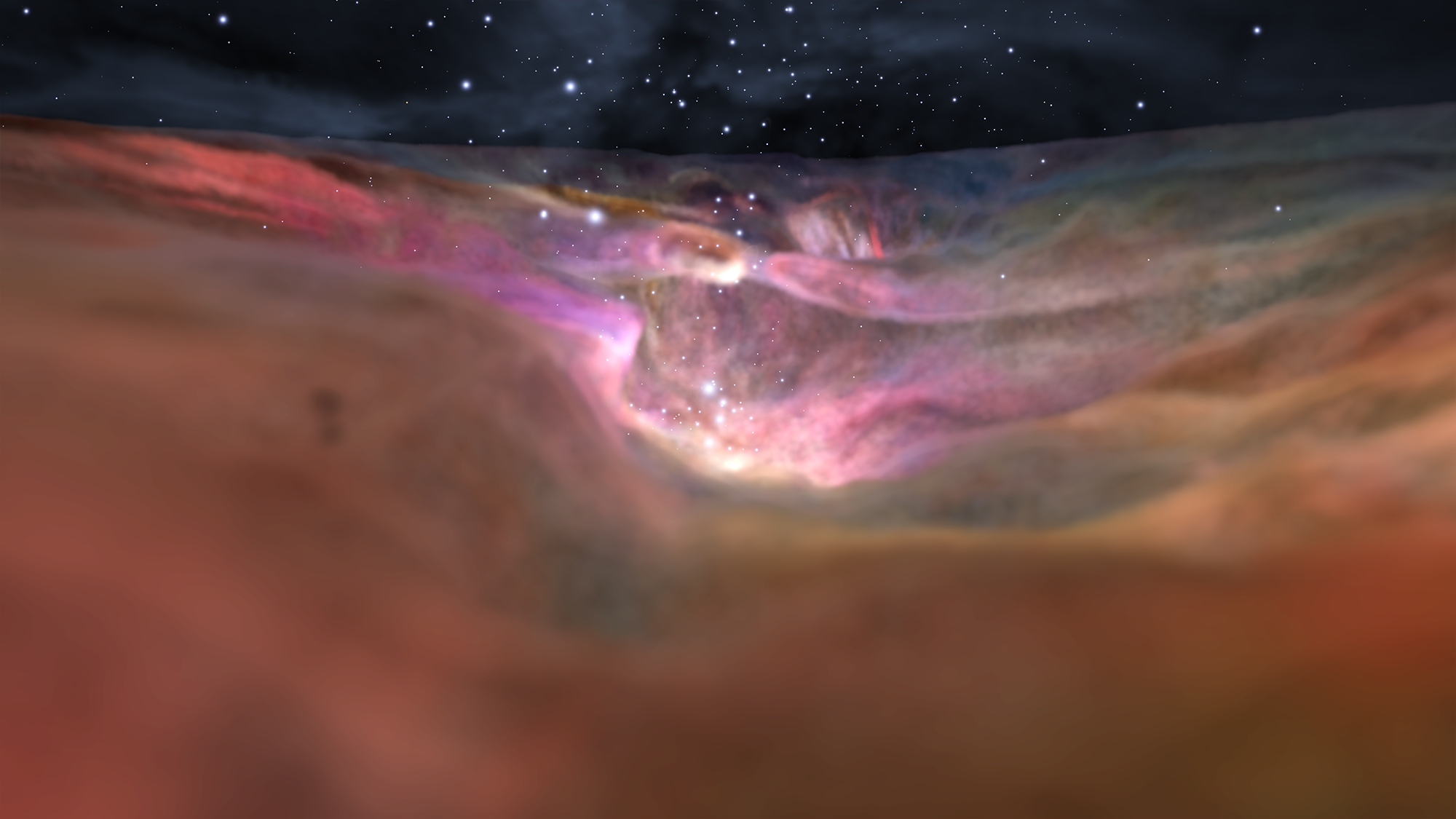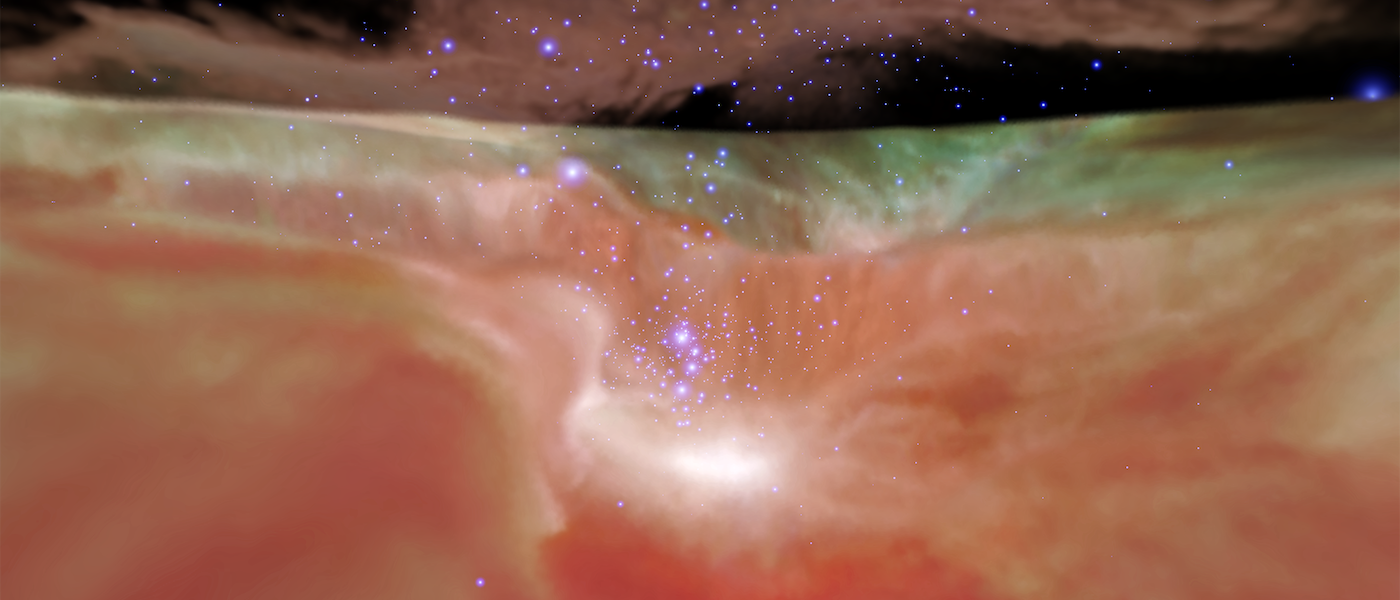LSC planetarium show features breathtaking visual of Orion Nebula

On Jan. 8, 2018, the American Association of Astronomers presented the official world premiere of a 3-minute long Orion Nebula visualization in Washington, D.C.. But guests at Liberty Science Center already saw it a month earlier.
Using data from both the Hubble and Spitzer Space telescopes, astronomers and visualization specialists teamed up to create the most detailed visualization yet of the Orion Nebula, one of the crown jewels of the night sky. Even before its official world premiere, the visualization was seen as part of LSC's new live show, Wonders of the Night Sky, in the Jennifer Chalsty Planetarium as early as Dec. 9.
Since we started playing it, guests have been enthralled by the detailed visualization, and have asked for more information about how it was made.

The Space Telescope Science Institute in Baltimore, M.D. and the Caltech/IPAC team in Pasadena, C.A. produced the movie, which combines imagery from both the Hubble Space Telescope (in visual light) and the Spitzer Space Telescope (in infrared), to provide the fullest realization of the nebula. The fly-through was made by first creating a three-dimensional model of the nebula, and then overlaying that terrain with colorful imagery from both the Hubble and Spitzer.
The Orion Nebula, 1350 light years from earth, is the nearest major star-nursery and one of the most explored regions of the cosmos. The nebula is only about two million years old, and will dissipate in approximately 100,000 years. We live in a brief blink of astronomical time when this rich nebula is there to be explored by the telescopes of our planet.
The nebula is a birthing ground not only of stars but also of tadpole-shaped envelopes of gas that encase "protoplanetary disks," which are solar systems in formation. These disks are an important clue to the answer of the great question: is there life elsewhere in the cosmos? Evidence from the Orion Nebula and many other sources indicates that planets are indeed a natural product of stellar formation. The greater the occurrence of planets in the universe, the better the chance of life as well.
In the Wonders of the Night Sky show, audience members explore where to find the constellation of Orion in the current evening sky, and then soar to the heart of the nebula through this visualization.

Interested in learning more up-to-date space news? LSC Space News Now updates appear at the end of each Wonders of the Night Sky show. Click here to see our full list of shows in the Jennifer Chalsty Planetarium, the largest and most technologically advanced planetarium in the Western Hemisphere.
